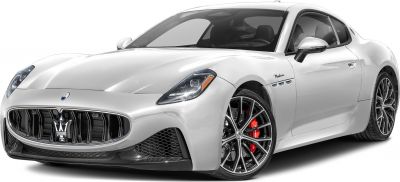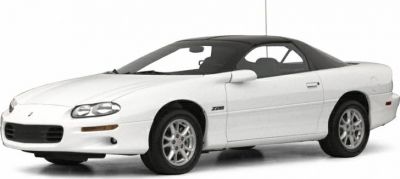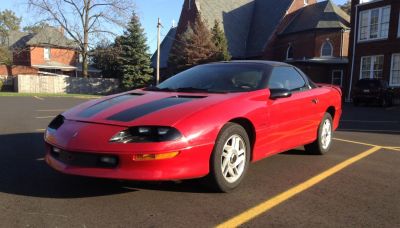 1970 Chevrolet Camaro II Dimensions, Size & Specs
1970 Chevrolet Camaro II Dimensions, Size & SpecsMeasurements of the 1970 Chevrolet Camaro II, engineered for optimal performance and comfort
| Dimensions | |
|---|---|
| Length: | 4775-5020 mm188.0-197.6 in15.7-16.5 ft |
| Width: | 1892 mm74.5 in6.2 ft |
| Height: | 1270-1300 mm50.0-51.2 in4.2-4.3 ft |
| Trunk Capacity: | 178 liter6.3 cu ft |
| Weight Specifications | |
| Curb Weight: | 1560-1695 kg3439-3737 lbs |
| Maximal permitted Weight: | 1840-1975 kg4057-4354 lbs |
| Roof Load: | 90 kg198 lbs |
| Tire Specifications | |
| Rims Sizes: | 15-inch rims:
|
| Tire Sizes: |
|
The Chevrolet Camaro II, produced from 1970 to 1981, represents the second generation of the iconic American muscle car. Available exclusively as a coupe, this generation Camaro spans a length range between 4775 mm to 5020 mm (188 to 197.6 inches), showcasing a notable size variation throughout its production years. The width remains consistent at approximately 1890 to 1892 mm (74.4 to 74.4 inches), complemented by a height ranging from 1270 mm to 1300 mm (50 to 51.2 inches), contributing to its aggressive yet balanced stance on the road.
Weighing between 1560 kg to 1695 kg (3,439 to 3,736 pounds) curb weight and capable of handling a maximum weight between 1840 kg and 1975 kg (4,056 to 4,352 pounds), the Camaro II balances muscular performance with substantial mass. The vehicle's roof load capacity stands at 90 kg (198 pounds), allowing for additional storage options on the roof without compromising stability.
The luggage capacity is modest at 178 liters (6.3 cubic feet), reflecting the car’s focus on performance styling over cargo space, typical for muscle coupes of its era. It rides on rims sized between 7J x 14 inches and 7J x 15 inches, paired with tire sizes like 215/70 R14, 225/70 R15, and 205/75 R14, offering a combination of classic looks and road grip suitable for spirited driving.
Overall, the Chevrolet Camaro II (1970-1981) exemplifies the muscle car ethos with its robust dimensions and balanced proportions, making it a memorable model in Chevrolet’s Camaro lineage and a popular choice among classic car enthusiasts and collectors.
Discover the standout features that make the 1970 Chevrolet Camaro II a leader in its class
Have a question? Please check our knowledgebase first.
The 1970 Chevrolet Camaro II ranges in length from 4775 mm to 5020 mm. In imperial units, this corresponds to approximately 188.0 inches to 197.6 inches. This variation depends on specific model variations and trim levels within the Camaro II generation, reflecting different design and feature packages available during its production from 1970 to 1981. This size positions the Camaro II firmly within the classic American muscle car dimensions of the era, offering a substantial and aggressive stance on the road.
The width of the 1970 Chevrolet Camaro II spans between 1890 mm and 1892 mm, which translates to roughly 74.4 inches to 74.5 inches. This width contributes to the car's broad, muscular appearance and improves stability on the road due to a wider track. Its width is fairly consistent across different model years and trims within the Camaro II range, maintaining a classic sports coupe profile that balances aerodynamics and presence effectively.
The height of the 1970 Chevrolet Camaro II varies between 1270 mm and 1300 mm, which is approximately 50 inches to 51.2 inches. This relatively low height contributes to the car's sporty, sleek silhouette, enhancing its aerodynamic properties and adding to the classic muscle car aesthetic. The lower roofline also provides a lowered center of gravity, which can improve handling and agility on the road.
The curb weight of the Chevrolet Camaro II from 1970 is between 1560 kg and 1695 kg, equivalent to approximately 3439 pounds to 3735 pounds. This weight range reflects the car's solid construction with muscle car performance in mind, balancing powertrain heft and structural integrity. It also impacts fuel efficiency, handling dynamics, and performance characteristics—key factors for enthusiasts considering this generation of Camaro.
The maximum weight capacity of the 1970 Chevrolet Camaro II ranges from 1840 kg to 1975 kg, which converts to roughly 4056 pounds to 4355 pounds. This figure includes the vehicle's own weight plus the maximum load it can safely carry, including passengers and cargo. Understanding this maximum payload is essential for safety and performance, ensuring the car operates within designed limits without compromising handling or structural integrity.
The luggage capacity of the Chevrolet Camaro II from 1970 is 178 liters, which is approximately 6.3 cubic feet. This trunk space is typical for a coupe sports car of its time, offering moderate storage for daily essentials, small luggage, or groceries. While not expansive, the available capacity provides practical utility considering the car’s sporty design and prioritization of performance over cargo space.
The 1970 Chevrolet Camaro II, with a length ranging from 4775 mm to 5020 mm (188.0 - 197.6 inches), width around 1890 mm (74.4 inches), and height near 1300 mm (51.2 inches), generally fits comfortably within standard residential garages. Typical American single-car garage dimensions are about 6 meters (20 feet) deep and 3 meters (10 feet) wide, providing sufficient clearance. However, owners should consider extra length for garage door clearance and maneuvering space. The relatively low height also ensures clearance for most standard garage door heights of 2.1 to 2.4 meters (7 to 8 feet). Overall, the Camaro II is practical for garage storage in most typical homes.
Compared to the first-generation Chevrolet Camaro (1967-1969), the 1970 Camaro II generally grew in size, especially in length, which ranges up to 5020 mm (197.6 inches) compared to the earlier generation's approximate 4850 mm (191 inches). The width increased slightly to about 1890 mm (74.4 inches), enhancing the car's road presence and stability. Height remained similar, maintaining a sporty profile around 1270-1300 mm (50-51.2 inches). The curb weight also increased, reflecting added features and structural reinforcements. Overall, the Camaro II offered a larger, more aggressive stance and improved interior room without compromising the essence of muscle car performance that defined the first generation.
The 1970 Chevrolet Camaro II occupies a competitive position among classic muscle cars of its era. Its length spans roughly 4775-5020 mm (188-197.6 inches), which is comparable but slightly longer than the 1970 Ford Mustang's length of around 4660 mm (183.5 inches). The Camaro II is also wider at roughly 1890 mm (74.4 inches) versus the Mustang’s approximate 1780 mm (70 inches), providing a broader stance. When compared to the Dodge Challenger of the same period, which measured close to 5070 mm (199.6 inches) in length, the Camaro II is slightly shorter but similarly wide. This size combination gives the Camaro II a balanced profile—larger and more substantial than the Mustang but a bit more compact than the Dodge Challenger—making it a popular choice among muscle car enthusiasts valuing aggressive looks with agile handling.
The 1970 Chevrolet Camaro II was equipped with tire sizes including 215/70 14, 225/70 15, and 205/75 14, paired with rim dimensions ranging from 7J x 14 to 7J x 15. These tire and rim combinations provided a balance between performance and comfort. Wider tires like the 225/70 15 improved grip and cornering stability, enhancing the muscle car's sporty capabilities. The rim sizes allowed for sufficient brake clearance and contributed to the car’s stance. The relatively tall tire profiles (70 and 75 series) helped absorb road imperfections, maintaining a somewhat comfortable ride despite the performance focus. These setups made the Camaro II adaptable to both spirited driving and regular road use.
Discover similar sized cars.

| Production: | 1982-1992 |
|---|---|
| Model Year: | 1982 |
| Length: | 4833 mm190.3 in |
| Width: | 1838 mm72.4 in |
| Height: | 1264 mm49.8 in |

| Production: | 2023-present |
|---|---|
| Model Year: | 2023 |
| Length: | 4959-4966 mm195.2-195.5 in |
| Width: | 2113 mm83.2 in |
| Height: | 1353 mm53.3 in |

| Production: | 1998-2002 |
|---|---|
| Model Year: | 1998 |
| Length: | 4907-4915 mm193.2-193.5 in |
| Width: | 1882 mm74.1 in |
| Height: | 1300-1322 mm51.2-52.0 in |

| Production: | 1992-1998 |
|---|---|
| Model Year: | 1993 |
| Length: | 4907 mm193.2 in |
| Width: | 1883 mm74.1 in |
| Height: | 1303 mm51.3 in |
